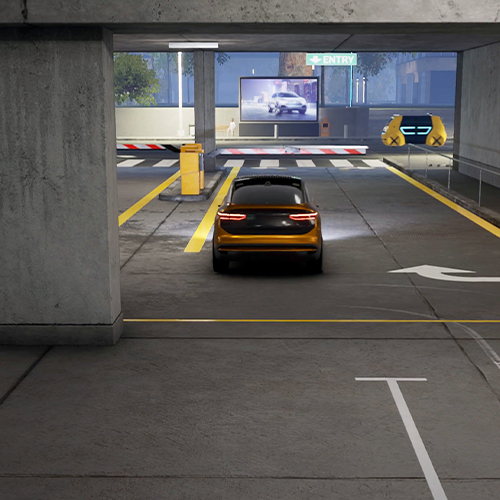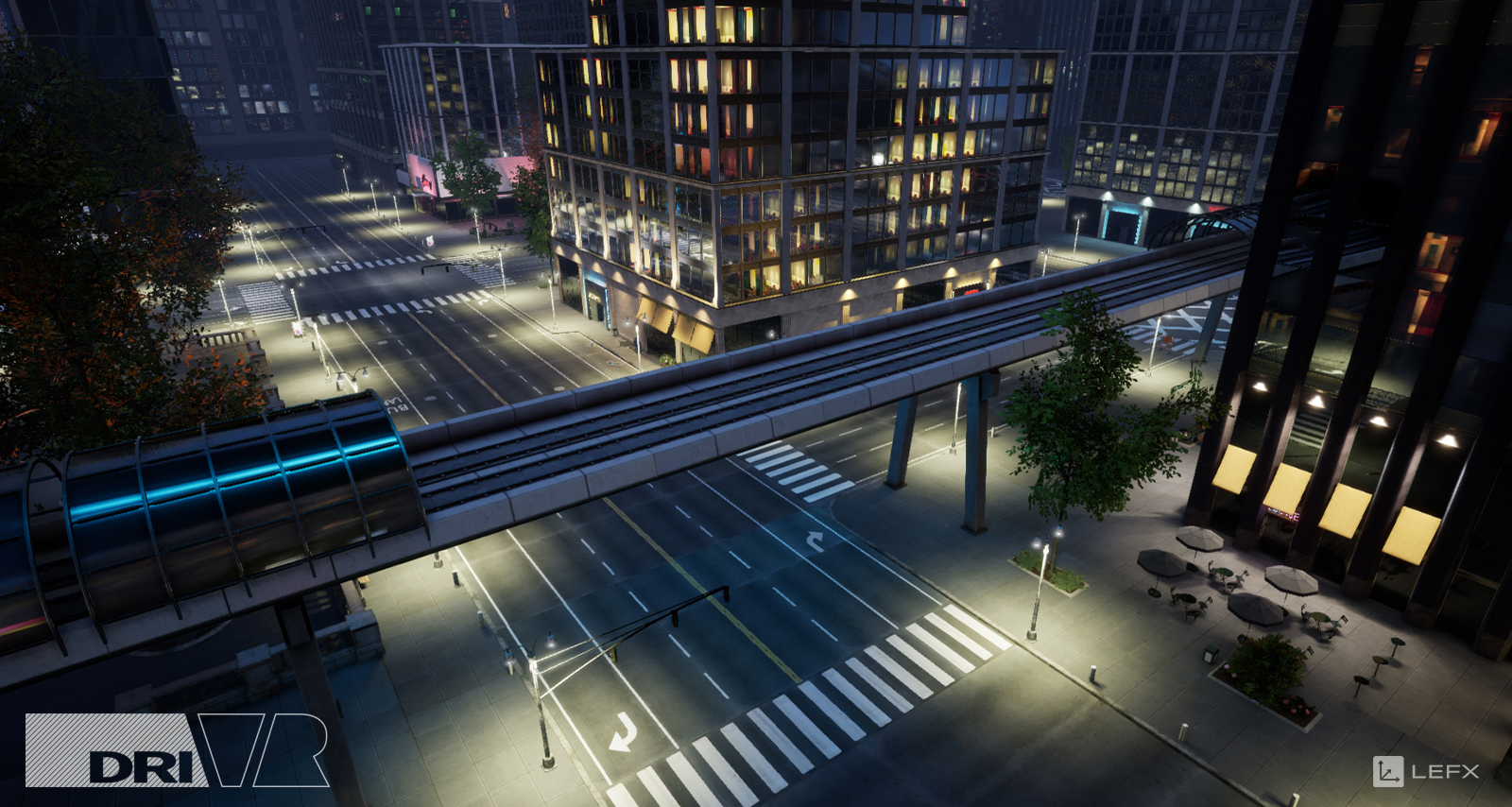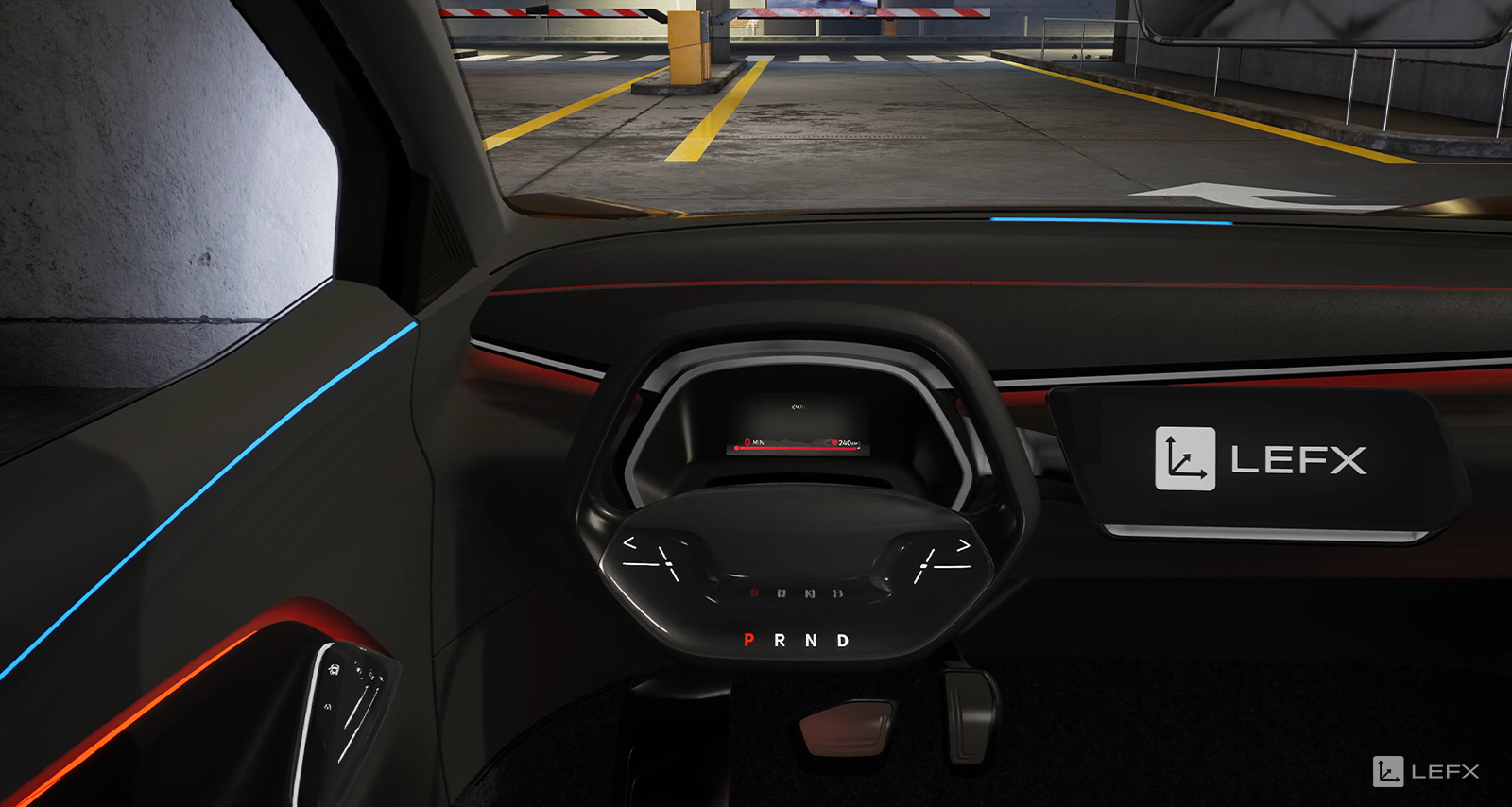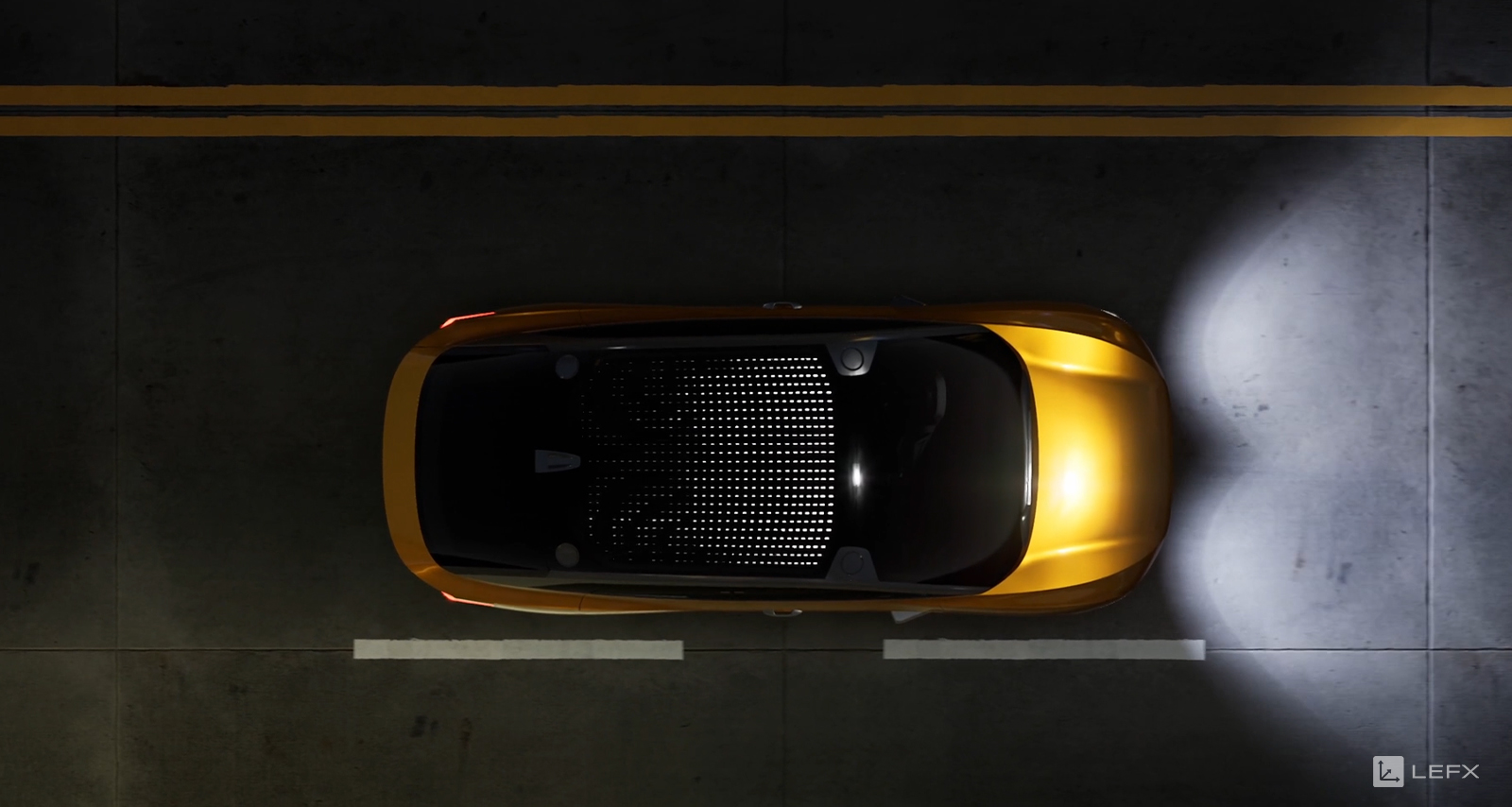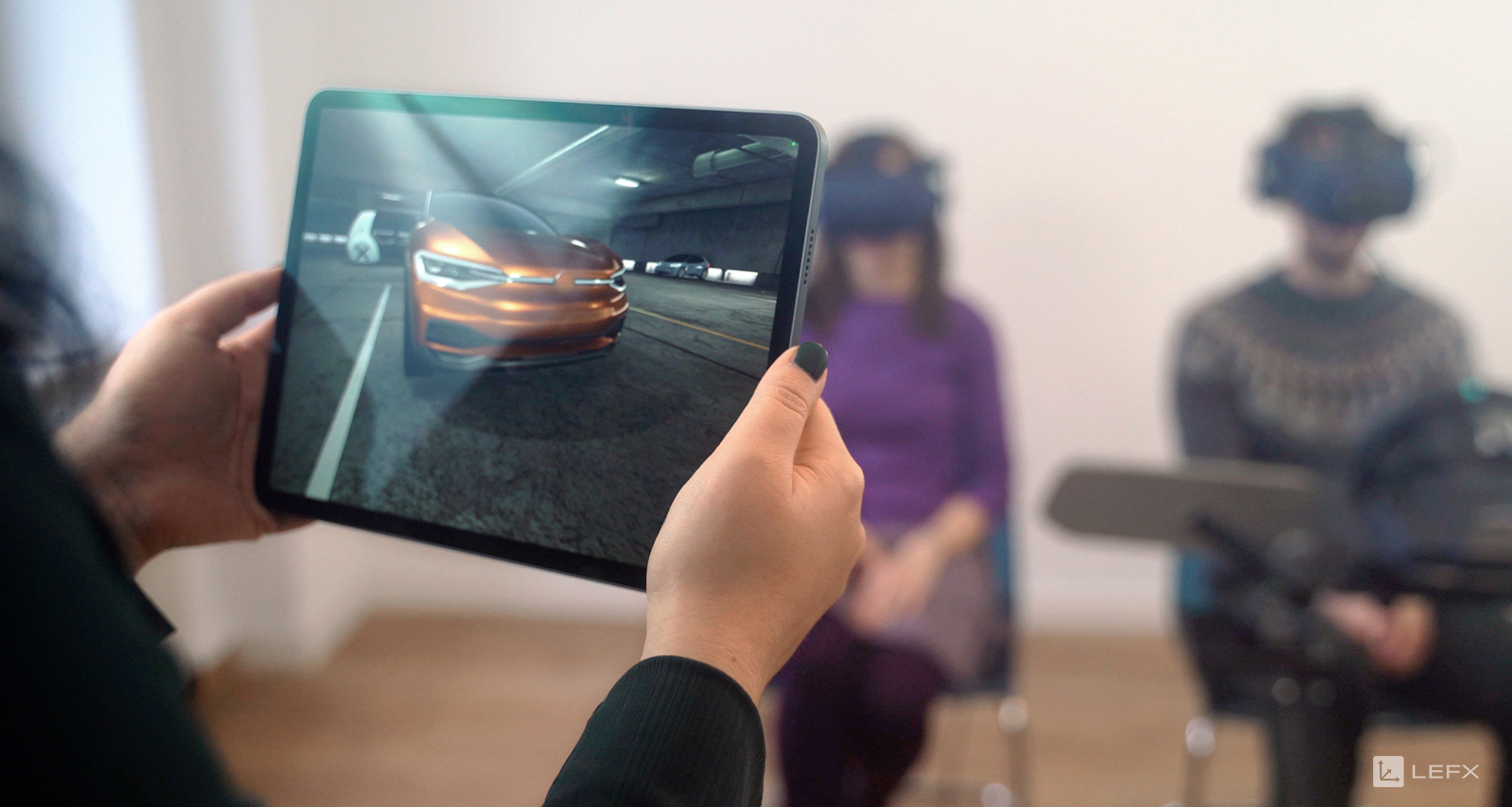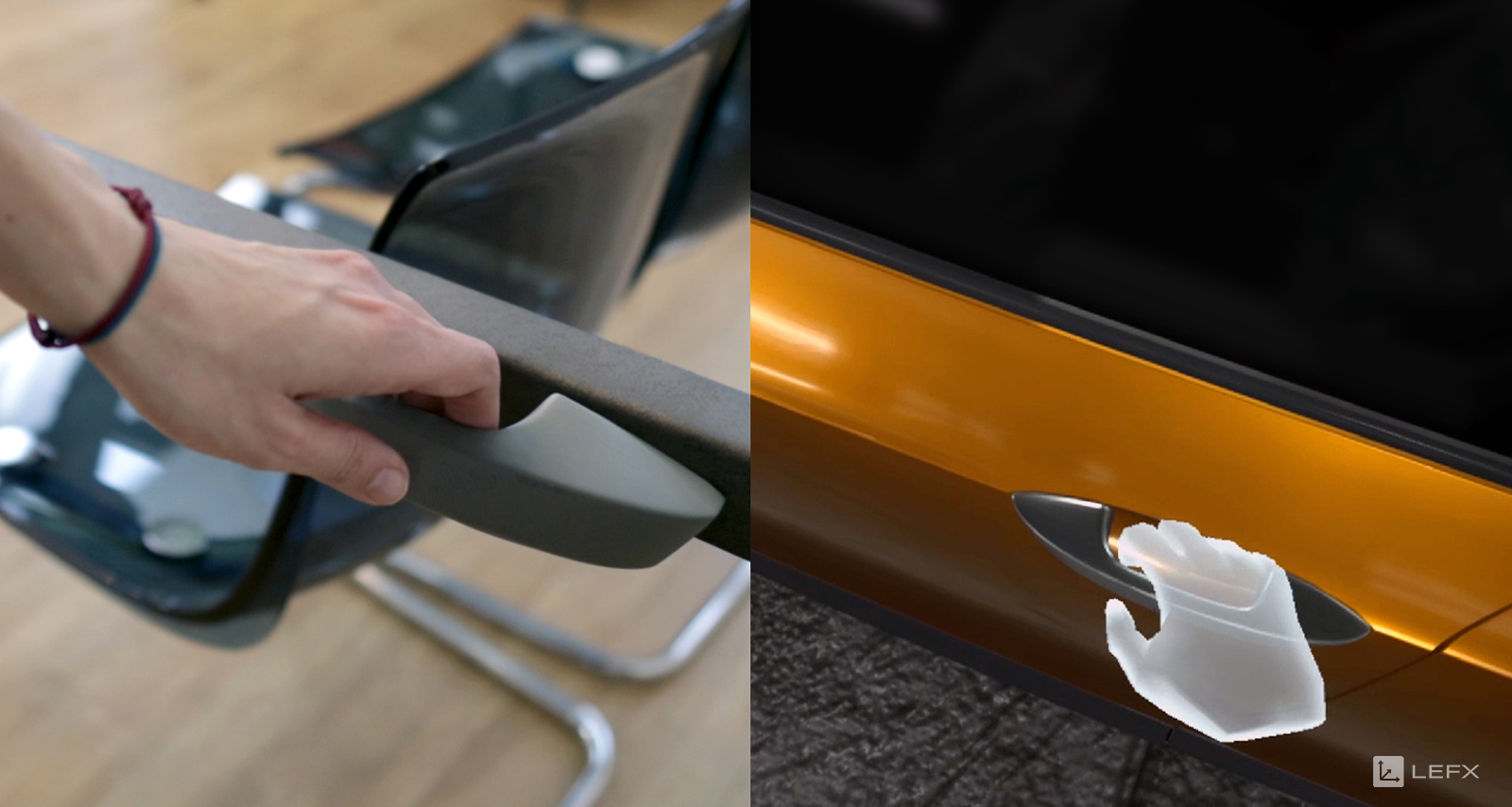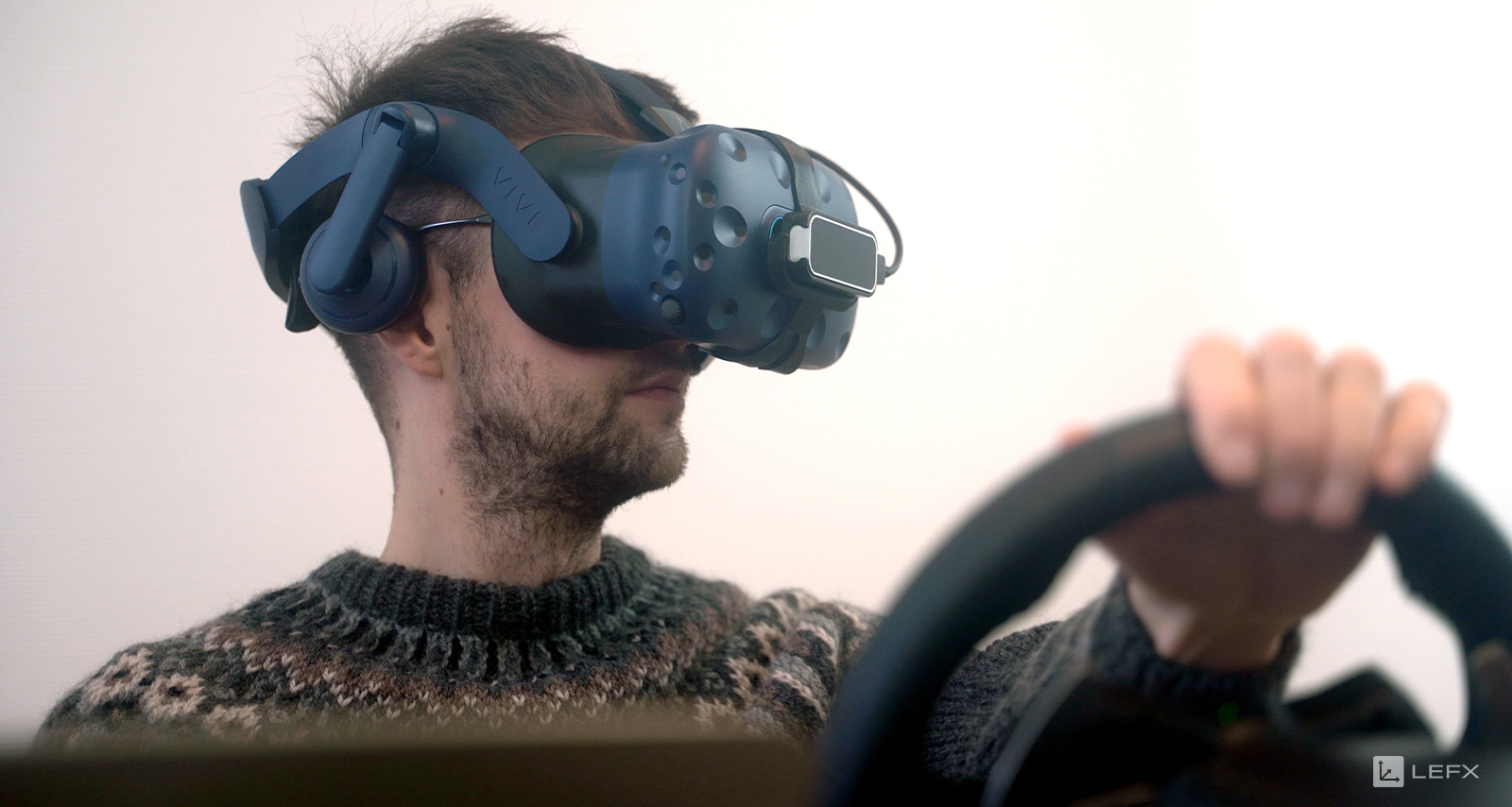Human-machine interface meets VR driving simulation
Driving in VR is a classic, which is why we’re spicing things up with a few technical features. What makes it special? Our application enables both autonomous and manual driving, and that’s not all – you can interact not only with virtual objects but also with real ones while having digital driving fun. We also have a VR and AR multiplayer mode for up to three people.
In combination with hand tracking, multiple sensors and 3D-printed components, this makes our prototype a successful demonstrator for the application of human-machine interfaces (HMI). Ready for a spin?
Virtual test drive
In addition to the driving pleasure itself, the focus of our application is primarily on the look and feel of the interior. What makes the interior of this concept study so special are the functions of the Ambilight in various driving situations. But of course the feeling of space itself and the interaction with the touch display in the cockpit should not be neglected. We pack all of this into a virtual test drive. In this way, we turn this “tour” into an experience that will be remembered for a long time.
Close up
To get as close as possible to the real experience, we don’t let the passengers sit anywhere: In the original project, we were able to draw on a model that is used for concept testing in the design process. Pre-series prototypes for seats, cockpit and doors, as well as parts of the bodywork, e.g. made of plastic, are manufactured and assembled.
However, we did not have the luxury of an industrially produced car model for our demo project. Nevertheless, we succeeded in creating an authentic sense of space and integrating all the necessary haptic interactors. In addition to the steering wheel and pedals from gaming supplies, the missing components came from our 3D printer. With a little craftsmanship, a sufficiently realistic replica was created to give the VR experience a real update in realism.
In combination with the built-in sensor technology, the human-machine interface (HMI) also works well. That doesn’t just sound fancy, it is! And this is how it works: When you reach for the door handle in VR, your hand doesn’t grope in the void but also physically finds a corresponding handle which, thanks to sensors, also virtually opens the car door. To keep your hands free for such features, we do without controllers and rely on hand tracking. For this purpose, we have integrated the LeapMotion system into the application and track the movement of the hands with pinpoint accuracy.
Drive Through
High time to take a tour of our application! We start in the underground parking garage, so we can take our time to look at the parked car from the outside and marvel at details such as the headlight animation of the vehicle welcome. After getting in, the interior with all its details can also be explored at length. This includes, above all, the virtual touch display of the on-board computer, which has numerous functions such as the sound and navigation system. The special thing about it is the haptic feedback, because when you operate the display in VR, your hand also touches the 3D-printed model of the on-board computer in the real world.
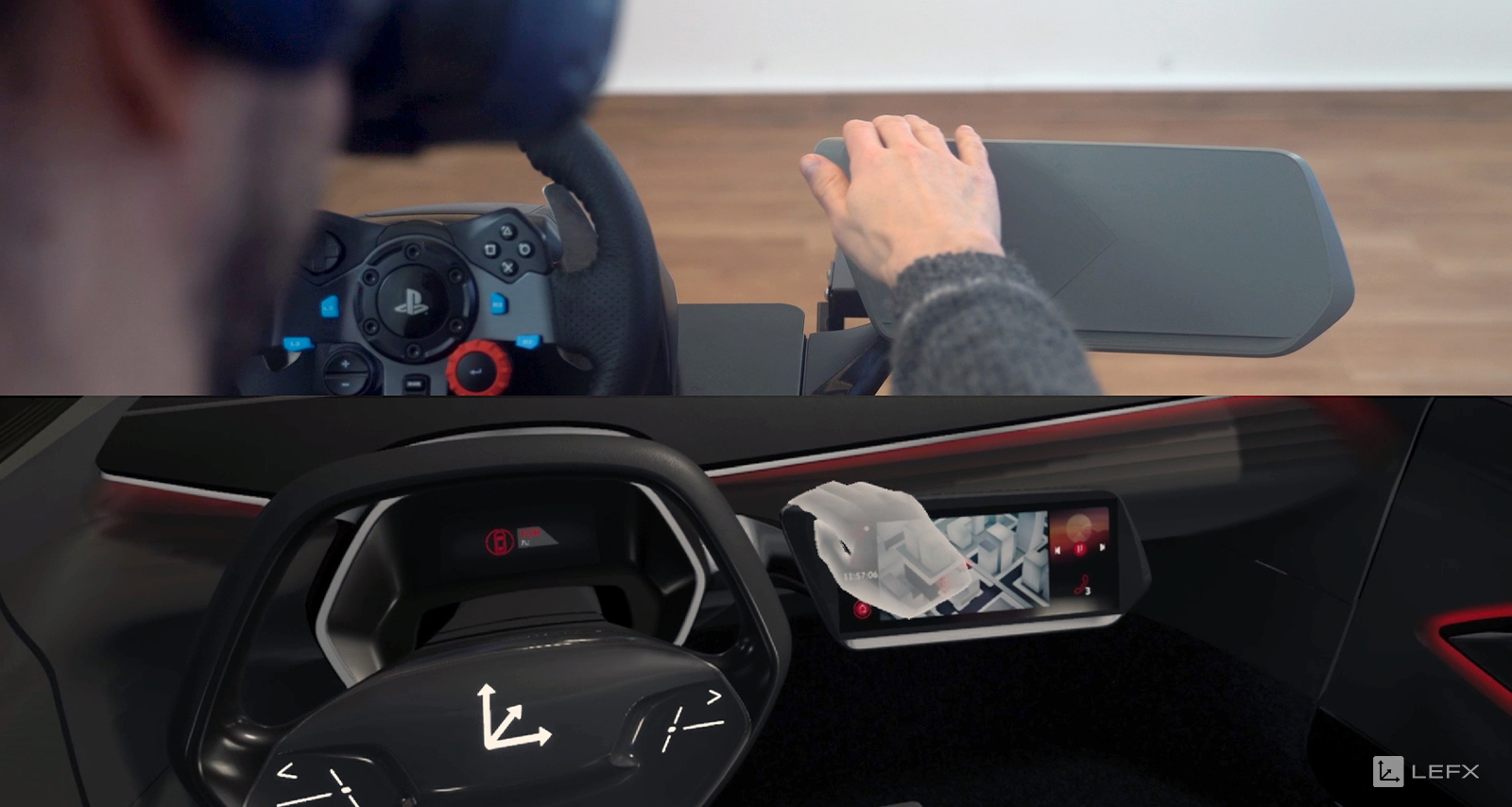
As soon as the car is started, a friendly voice guides you through the next steps and, thanks to the autopilot, you roll out onto the streets of the big city at night as if by magic. You can relax and look out of the window and take in the big city life or marvel at the interactive lighting system. At least until a parked car crosses your path and you can take the wheel yourself after a successful evasive maneuver. You can then be navigated to a free parking space, where the car parks itself and the familiar “You have reached your destination” can be heard.
Multi-media multi-user set-up
Driving alone is only half as nice, which is why our application also offers the option of taking a passenger on board. This means we have two passengers, each with VR goggles, who can take a seat in our model.
Another person can also take part in the experience: As an external observer, this person can also immerse themselves in the start sequence in the parking garage using AR via an iPad, explore the vehicle and its interior independently and look over the virtual shoulders of the two VR protagonists.
Sounds cool, but also like a lot of technical effort? It really is! All of this requires a sophisticated system of coordinated tracking, several PCs that synchronize everything and a stable wireless network connection.
So nothing can stop us from creating this immersive experience

